I help my friend Devon with catering. He has a pig farm and does pig roasts/weddings, etc. He asked me the other day, “Is there any thing I can do with these pig heads?”
“YES!”
“You can make jowl bacon from the jowls and the rest can be made into headcheese.” Headcheese, or souse, is essentially a natural aspic make of the gelatin derived from simmering the head and/or trotters of a pig. It is garnished with the slow-simmered tongue, cheeks, ears and snouts and seasoned with an aromatic spice mix. It’s delightful and mostly fat free if you’re avoiding pork because of the high PUFA content.
Naturally derived gelatin also happens to be the best natural source of glycine, the limiting factor in producing glutathione, the body’s master antioxidant.
This is a fun article about making headcheese, but it’s also a science based article about maintaining antioxidant balance. If you’d like to understand a little more of the science about oxidative balance check out Hydrogen Peroxide Flips the Switch and Oxidative Balance: a Simple Regulatory Loop.
Gelatin and Glycine
Collagen is the most abundant protein in your body. When it is slowly simmered it breaks down into gelatin. The most abundant source of collagen is pig skin. That’s right, pork rinds. And yes, “Jello” really is made out of pig skins to this day.
Collagen, and therefore gelatin, has a very unique amino acid profile compared to muscle proteins. For instance, according to the USDA, gelatin is 20% glycine by weight and only 0.6% methionine, having a glycine:methionine ratio of over 30:1. By comparison, ground beef has a glycine:methionine ratio of about 2.6:1. This is relevant because glycine and methionine are both involved in a process called “one carbon metabolism” or methylation. It turns out that if you consume glycine and methionine together you are not getting the real benefits of pure glycine. Chris Masterjon has a good discussion of this starting at about the 32 minute mark of this podcast. If you really want the benefits of glycine you should consume it in it’s pure form by eating connective tissues, skin or gelatin.
So why do we care about glycine? If you’ve followed this series, you’ll know that the bodies master antioxidant is a small polypeptide called glutathione. Glutathione is basically a tiny protein composed of three amino acids – glutamate, cysteine and glycine. Of these, glycine is typically the limiting factor as discussed in the paper Dietary Glycine Is Rate-Limiting for Glutathione Synthesis and May Have Broad Potential for Health Protection.
Furthermore, sustained hyperglycemia is associated with low cellular levels of the antioxidant glutathione (GSH), which leads to tissue damage attributed to oxidative stress. Late stage diabetics typically have very low levels of glutathione, but even in them, glutathione levels will rebound with supplemental glycine.
As discussed in Oxidative Balance, every cell has a built in mechanism to avoid oxidative stress, if you give it the building materials. Getting some free (of methionine) glycine in your diet is the best way to boost your antioxidant system. It is far better than consuming dietary antioxidants.
Headcheese
Don’t miss the pictorial following the recipe!
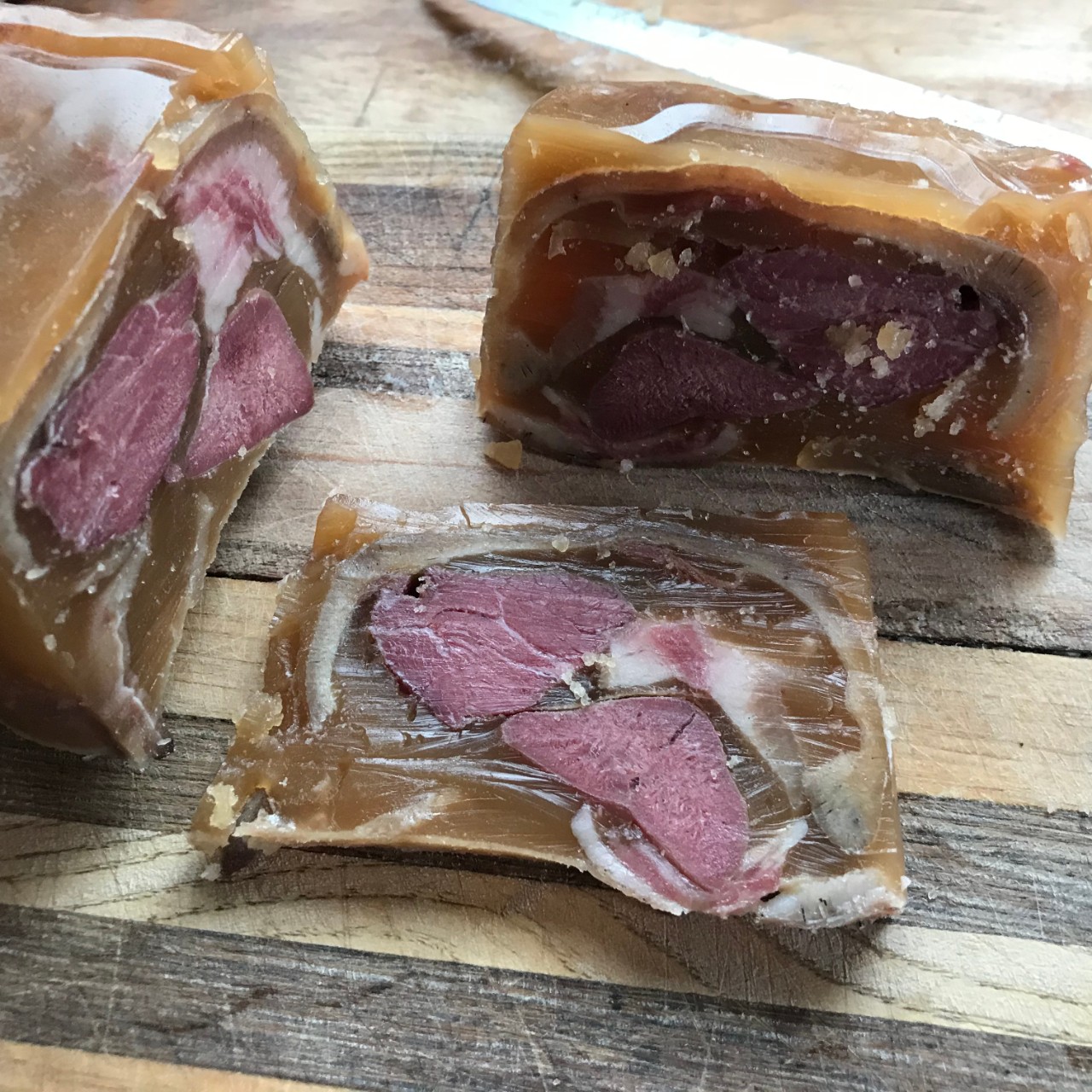
Method
- Butcher the pigs heads, removing the jowls, cheeks, ears and snouts separately. Set the jowls aside for bacon or jowl confit.
- Brine the cheeks, ears and snouts by adding 2% Morton's tenderquick by weight. That works out to 9g of cure or 1 tbsp per lb. Rub the cure evenly over the parts and refrigerate overnight.
- Cover the pug heads with water in a large pot. Bring to a boil, cover and reduce to a simmer for 8-12 hours.
- The next morning, strain the liquid from the heads, reserving all of the liquid. If it is very reduced, you should add some water and make sure the broth is rinsed off the bones before straining.
- Strain the fat from the top of the broth. You can do this with a ladle or a fat strainer, just like making gravy. Or you can refrigerate the broth overnight. The fat will solidify on top and you can simply scrape it off.
- Add the strained liquid to a large pot and bring to a simmer.
- Put a small amount of the broth into a ramekin, jar or bowl in the fridge to solidify. This is a test for firmness. The final product needs to be firm enough to slice with a knife when it comes out of the refrigerator.
- Make a boquet garni with a clean rag or some cheesecloth. Add to the cloth aromatic spices – black peppercorns, cloves, juniper berries, bay leaves, cinnamon, allspice berries, oregano, rosemary, orange peel, rose hips. You can get as creative as you want here, but you can do worse than to simply use a commercial pickling spice, which is what I did. Tie the boquet garni closed with kitchen twine ans add it to the simmering liquid.
- Trim any remaining membranes from the cheeks, tongues, etc. Remove any hard cartilage from the snouts.
- Simmer the cheeks, snouts tongues and ears in the broth for 2-3 hours, until the cheeks will easily pull apart with a fork. You can weigh the top of them down with a heavy ceramic plate to keep them submerged. The gelatin from the ears and snouts that cook out during this step will continue to thicken the broth.
- If your test broth that you refrigerated is sufficiently firm, you can go ahead with the recipe. It should be as firm or ideally a little firmer than commercial Jello. If its not, make a new test block now that you've simmered the ears. If your block is very soft, you may need to reduce the volume of liquid by reducing it. Measure the volume of the liquid and then boil the water away until taking test blocks as you go, until you get a consistency you like. If you go too far, you can always add back a little water.
- Once you're happy with the firmness, adjust the salt. You want it taste quite salty at this stage. Salt tastes more pronounced in hot foods than it does in cold foods. The headcheese has to be served cold so if it's a little too salty now, it should be perfect when served.
- If the membrane in the center of the ears is still too chewy, it should be easy to peel away either side of the ears and discard the membranes.
- Now line a baking pan with the ears, put the cheeks, tongues and snouts in the center, pour the gelatin over the pans and refrigerate overnight.
- Enjoy!
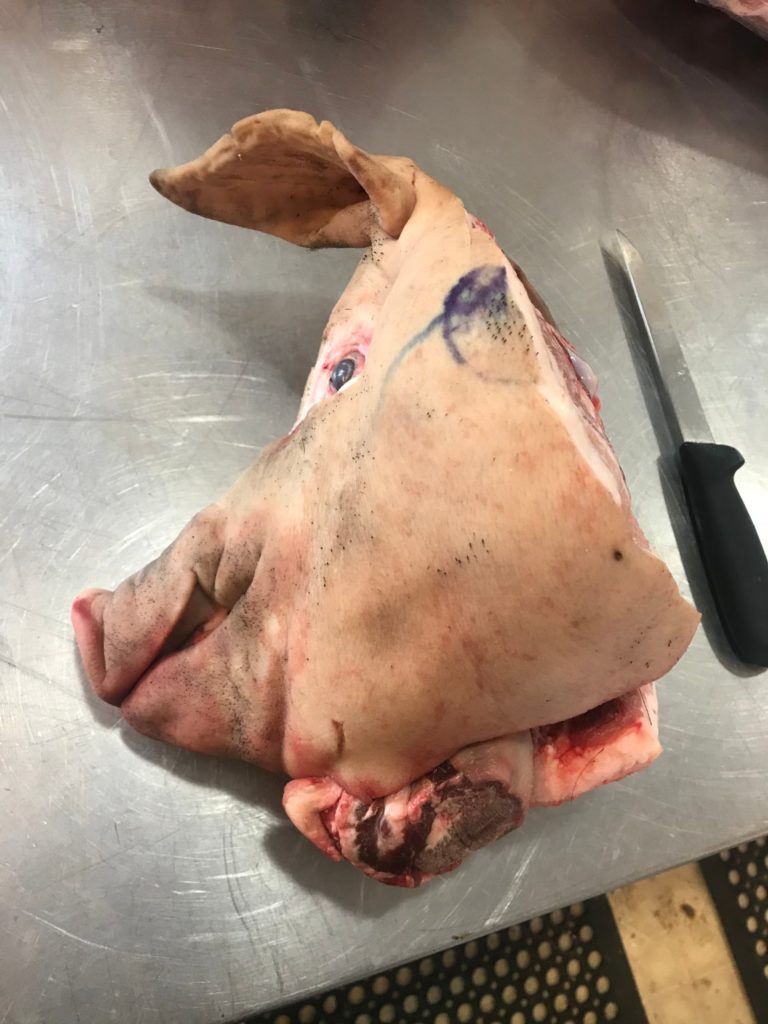
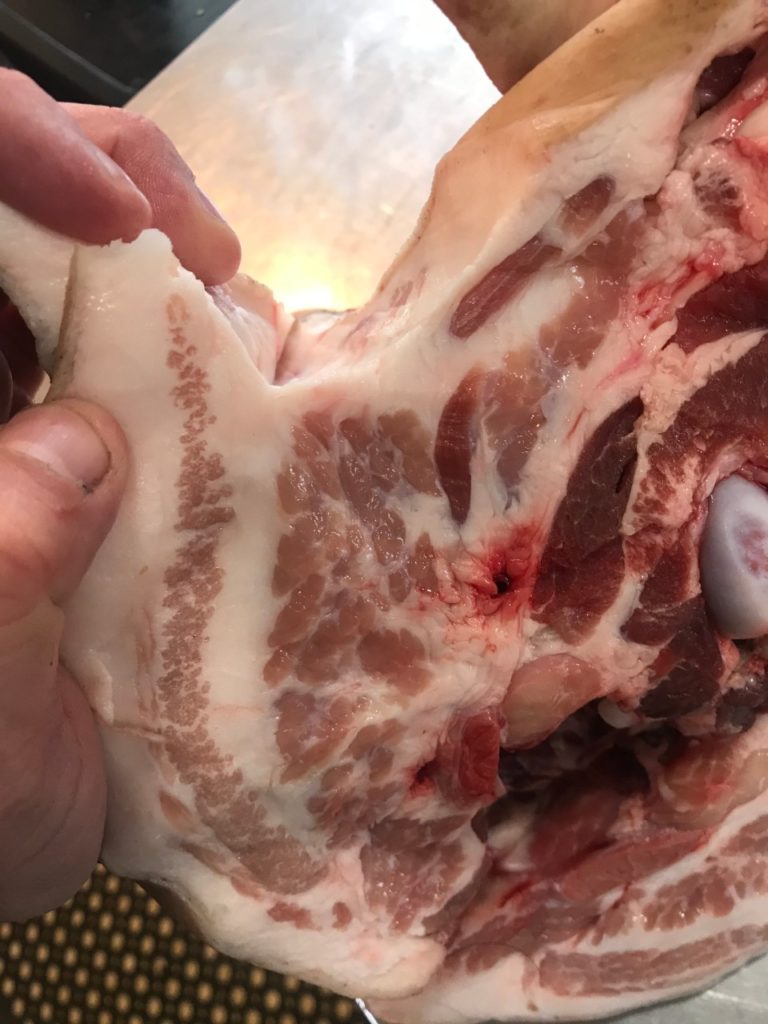
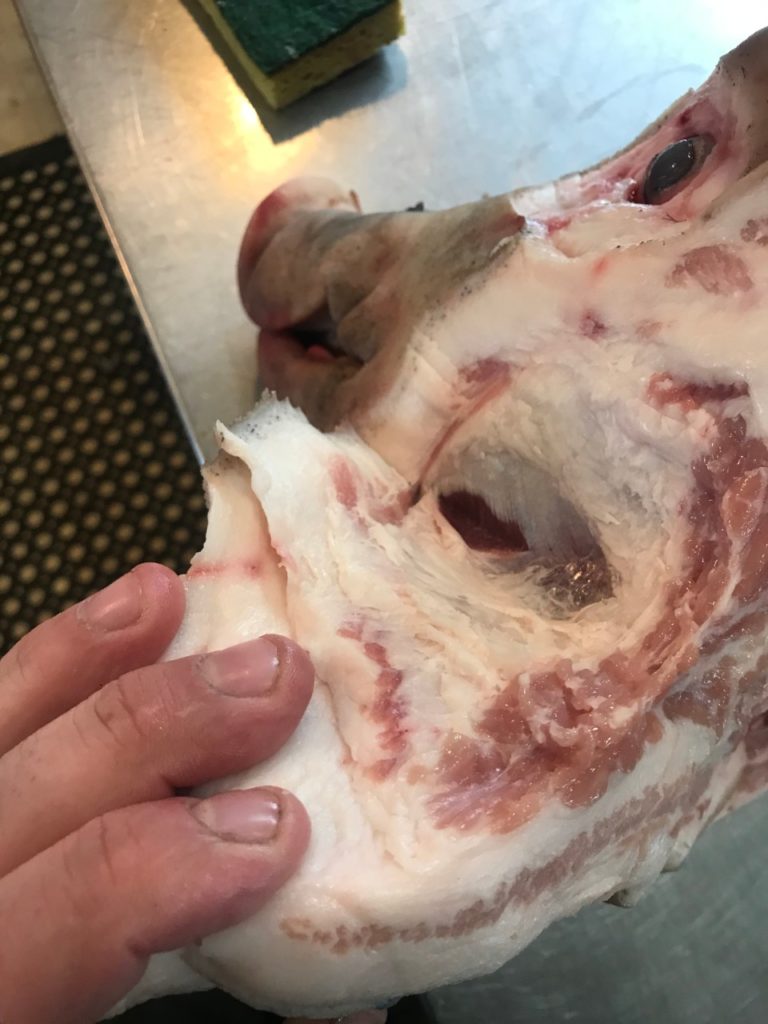
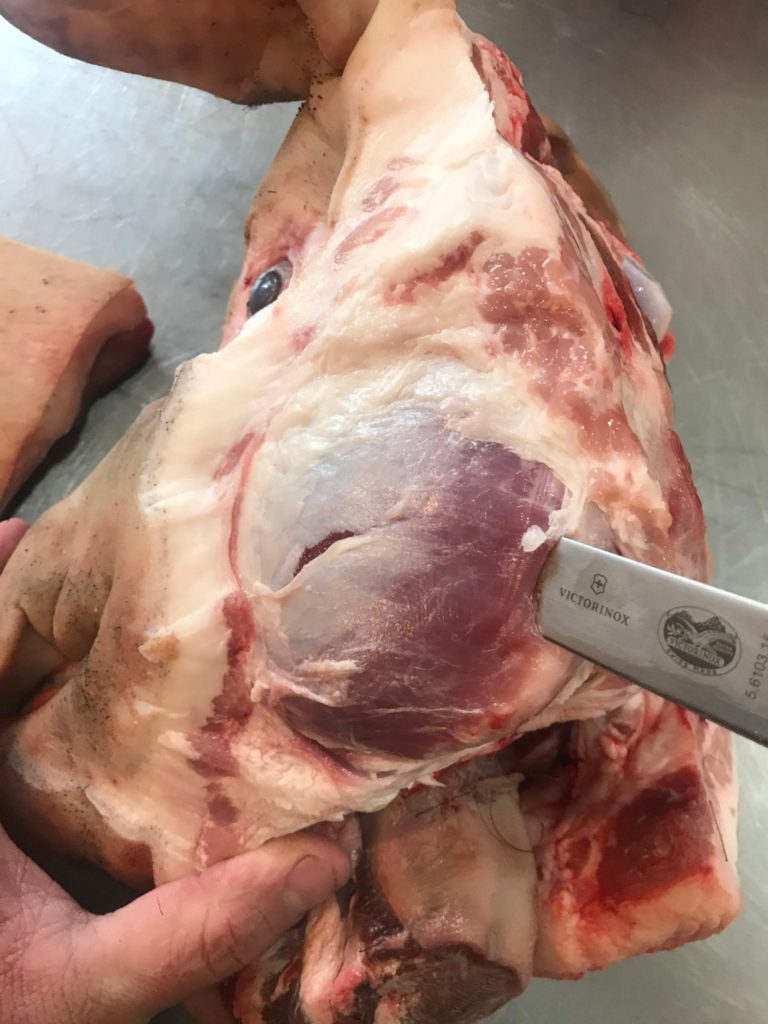
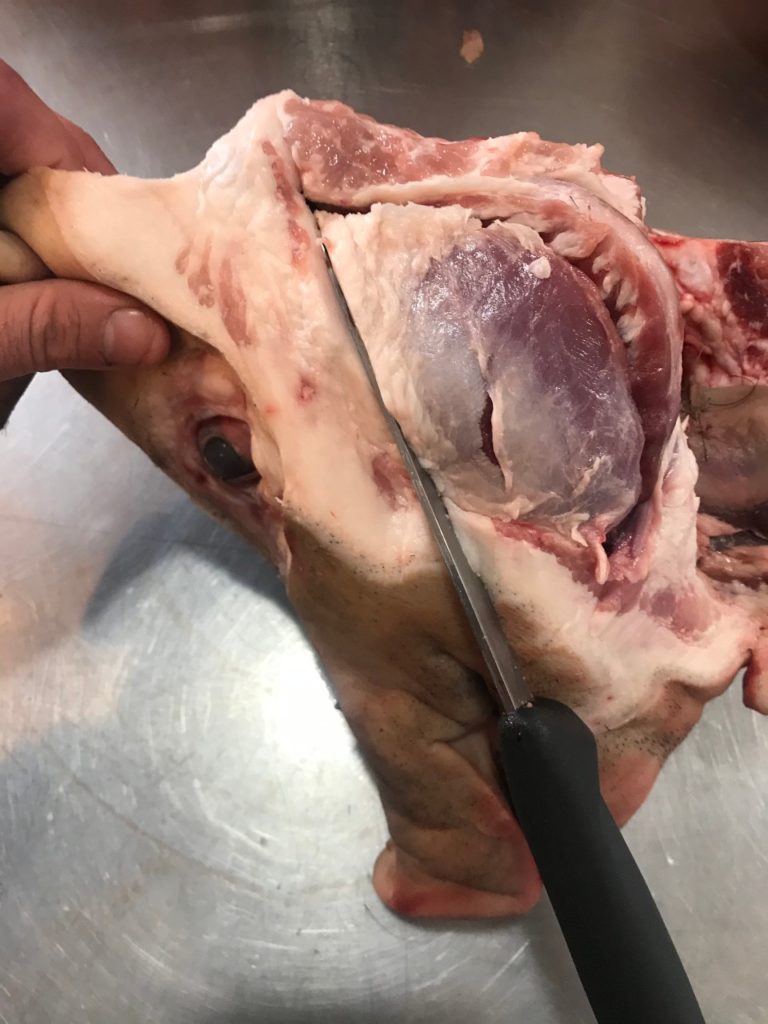

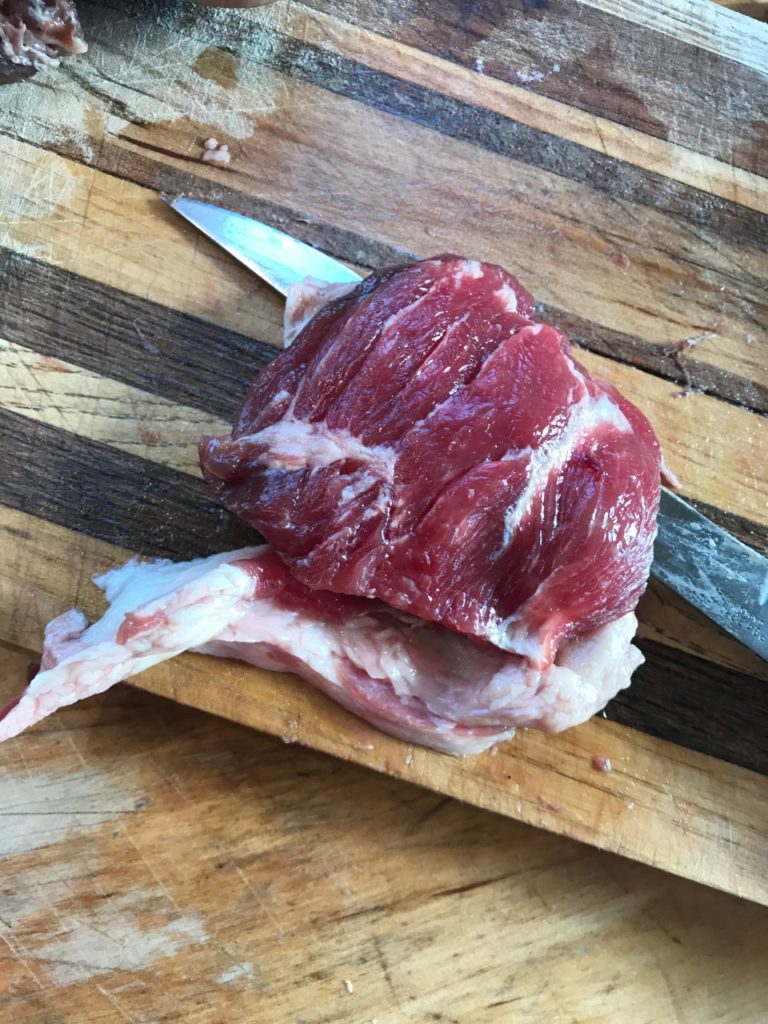
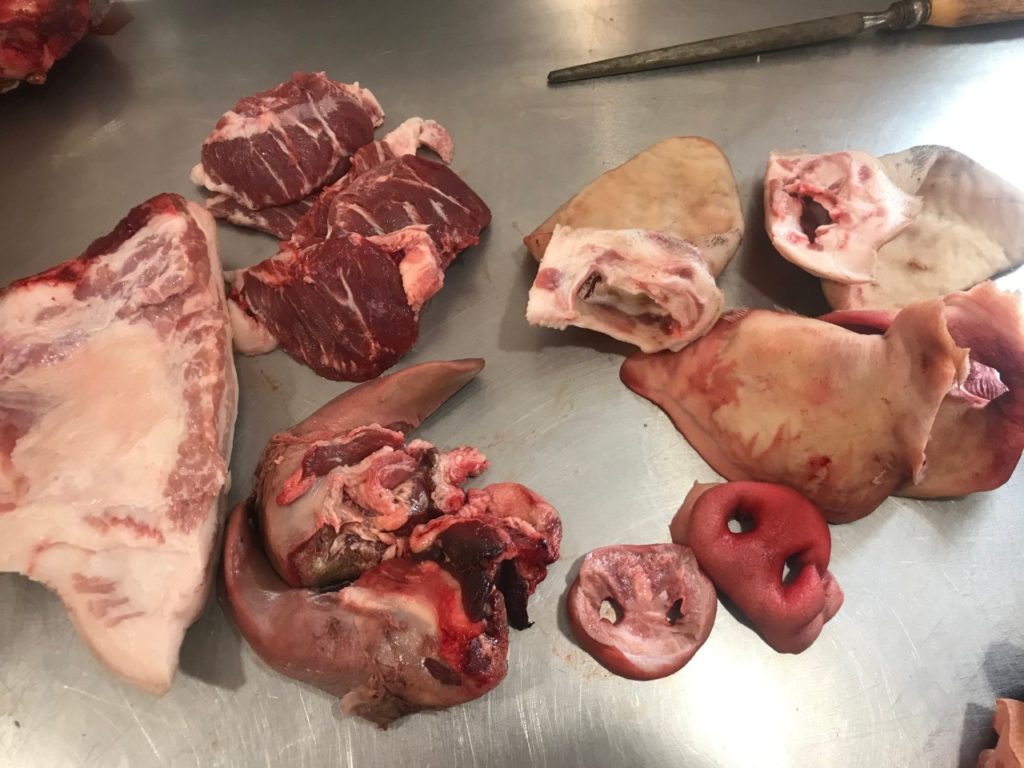
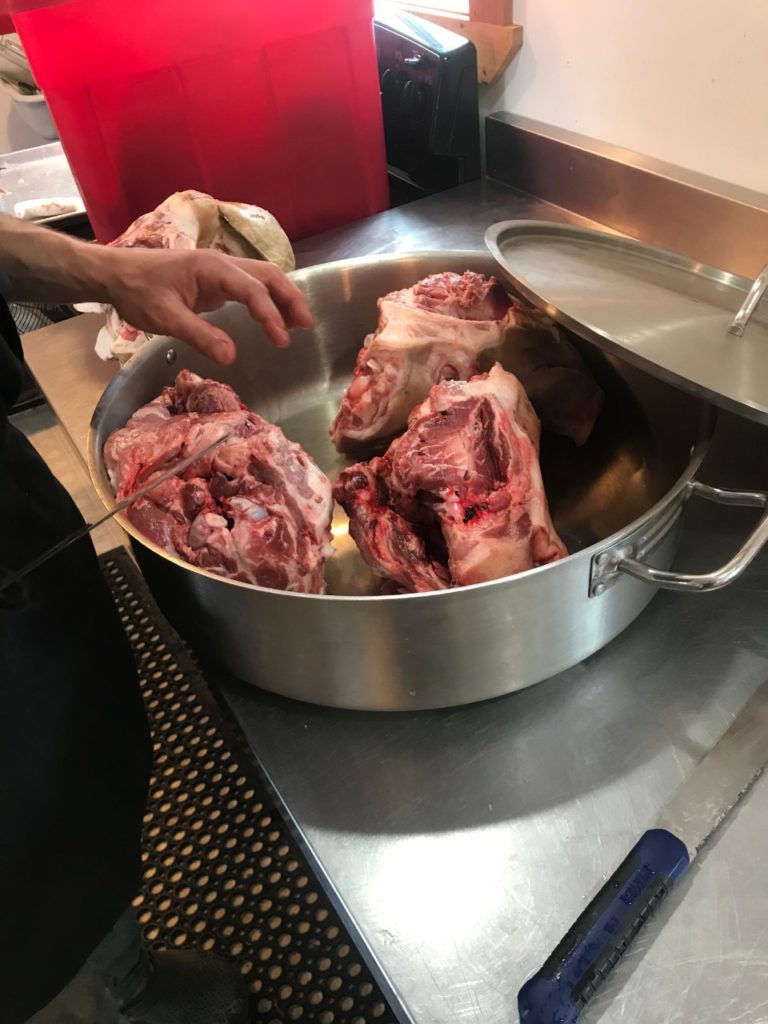




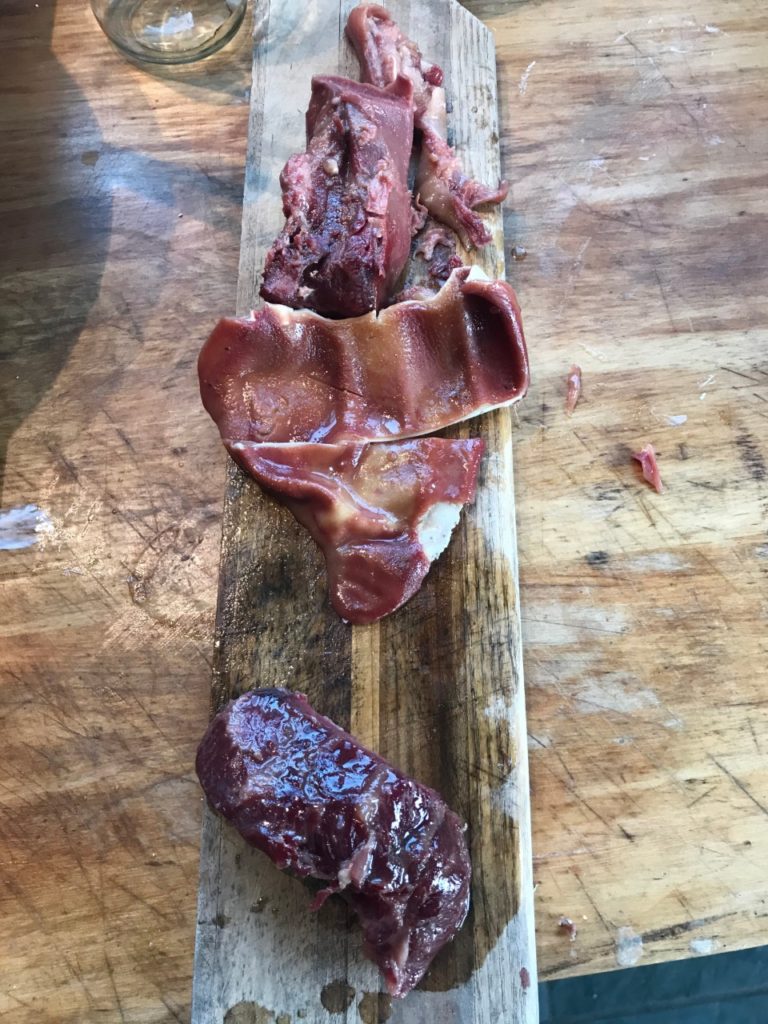
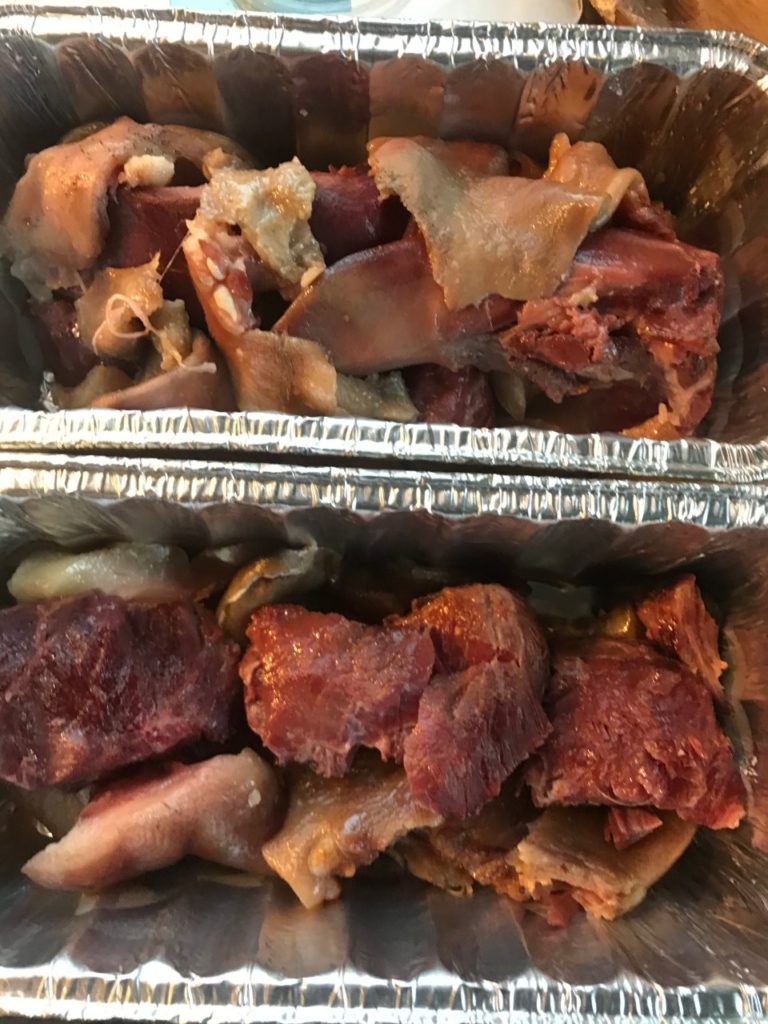
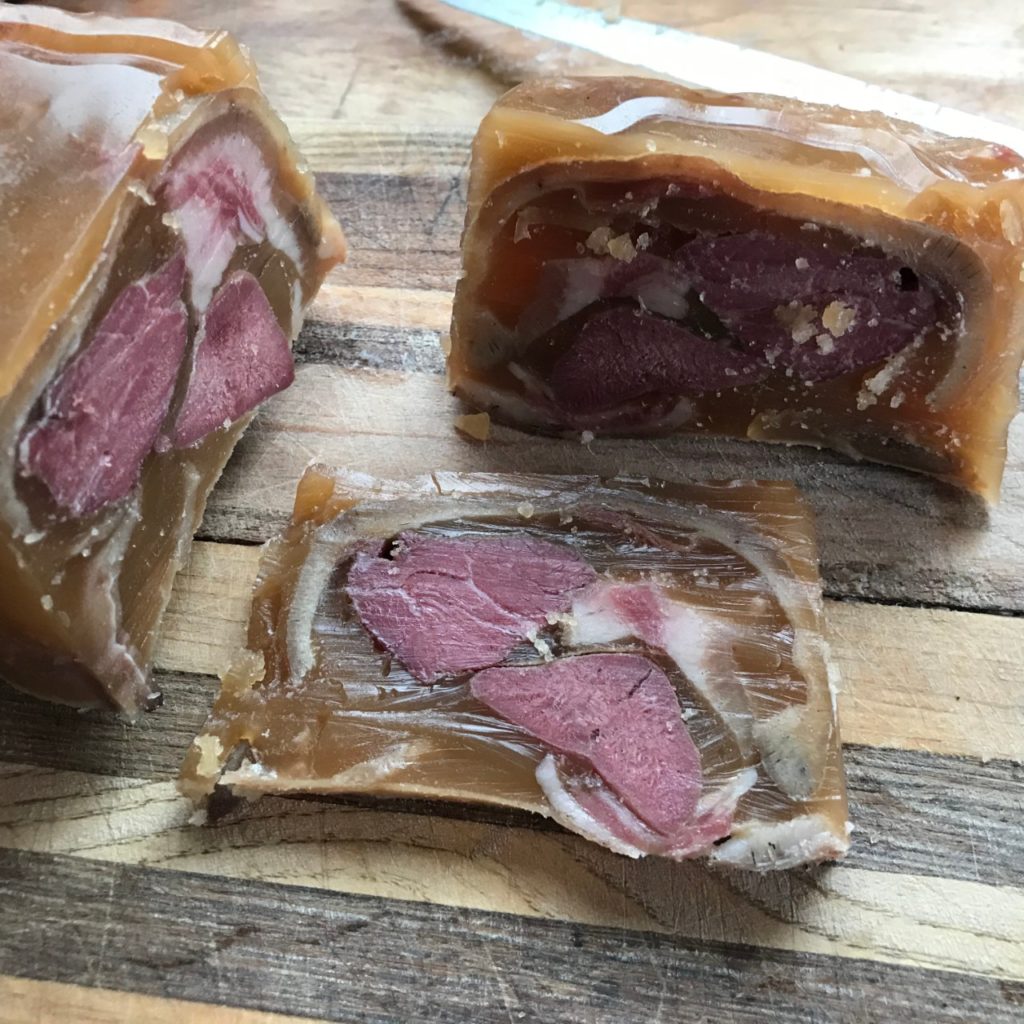

You can make posole! A Mexican stew.
In my area (Central Europe) pig slughtering was THE event. When something like that happend the custom was to invite all your neighbours(usually whole village) and celebrate. Drinking, dancing and eating.
What was the treat?
– jowl cut boiled until soft then sliced and served
– the second was brain fried with scrambled eggs. some people ate it raw with lemon. or some other variation.
Amazing science Amazing recipe! I am going to take it to my Butcher when lockdown passes and see if he can me up a batch! Bravo Brad!
Hey Brad, I am so enthralled with your blog. Hey have you heard about the Rosetto Effect? I think you would be entertained by it.
https://www.unimedliving.com/living-medicine/illness-and-disease/the-roseto-effect-a-lesson-on-the-true-cause-of-heart-disease.html
Like I said, I pretty much fell into a black hole reading all of your content. There are so many questions that I have had about keto and carnivore that are answered by your logic of SFA and SA. One is how certain people on the carnivore/ keto diet continue to gain weight while others the weight just falls off…this would make sense depending on the composition of the fats people were eating. Another is, a lot of people find success eating carnivore rather than keto…this also would make sense depending on the types of fats people were eating. Also, a lot of folks in the carnivore community use “our caveman ancestors” as a point of reference for how we should be eating, but its interesting to think about how the composition of meats would have been different (namely everything they ate would have been wild caught/ grass-fed) compared to the beef we buy from the supermarket now (grain finished).
I hope you are keeping on during this rough patch. Thank you!
Thanks for the comment. Sorry about the slow reply, it’s been a weird couple of months!
And yes, I think you’re exactly right. When people stall on keto, perhaps it’s because of all of the PUFA in all of the bacon they’re eating!
I am very interested to hear your thought on sodium nitrates and nitrites, and sodium phosphates. Also msg. At the moment I try to minimise these in my diet, but it makes me very sad to bypass the delicious tongues and head cheeses sold at my butcher.
https://firebrandmeats.com/nitrates-in-pork/
Your store says you ship internationally, but my order wasn’t processed because of my location, Canada. Is this a change due to Covid-19?
Thanks
I ship to Canada… Sometimes there is a browser issue. Try a different device or browser.